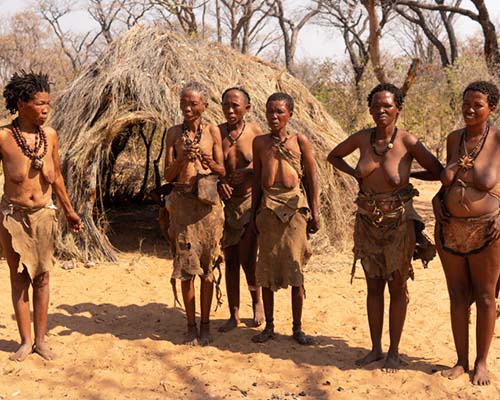The People of Namibia
The people of Namibia, diverse and welcoming
Rich in culture, tradition, and resilience across deserts, savannas, and cities

Namibia is a land of striking landscapes and remarkable cultural diversity. Home to just over 2.5 million people, Namibia is one of the least densely populated countries in the world. Despite its small population, the country is rich in cultural heritage, shaped by centuries of migration, trade, colonization, and resilience. The people of Namibia represent a unique blend of ethnic groups, languages, and traditions that together form the heart of the nation. The people of Namibia are as diverse as the landscapes they inhabit.
Ethnic and Cultural Diversity. Namibia is home to more than 11 major ethnic groups, each with its own language, customs, and traditions. The largest of these groups include:
1. Oshiwambo-speaking people. Making up nearly half of the population, the Oshiwambo communities live mainly in northern Namibia. They are known for their strong communal culture, traditional homesteads, and vibrant crafts. The Oshiwambo are primarily agriculturalists and play a central role in the country’s economy and politics.
2. Herero. The Herero people are pastoralists, historically known for cattle herding and their distinctive Victorian-style dresses worn by Herero women—a legacy of German colonial influence. They have a proud oral tradition and maintain strong ancestral customs.
3. Himba. A semi-nomadic group related to the Herero, the Himba live in the remote Kunene Region in the northwest. They are famous for their unique appearance: red-ochre skin, braided hair, and handmade jewelry. Himba culture is closely tied to nature and spirituality, with a deep respect for ancestral traditions.
4. Damara and Nama. The Damara and Nama are two of Namibia’s oldest cultural groups, speaking variants of Khoekhoegowab, a click language. Both groups have rich musical and storytelling traditions. The Nama are known for their poetry and songs, while the Damara have long-standing ties to the land and traditional crafts.
5. San (Bushmen). The San people are among the oldest continuous populations in southern Africa. Traditionally hunter-gatherers, they have lived in the Kalahari Desert region for thousands of years. The San are known for their deep understanding of nature, complex rock art, and unique click-language dialects.
6. Caprivian Groups. In the northeastern Zambezi Region, several Bantu-speaking groups like the Lozi, Subia, and Mafwe live in the more tropical and riverine parts of Namibia. These communities are closely connected to the ecosystems of the Zambezi and Okavango Rivers.
Languages. Namibia is a multilingual nation with over 30 languages spoken across the country. English is the official language, used in government and education, but many Namibians speak Afrikaans, German, Oshiwambo, Khoekhoegowab, and other indigenous languages in daily life.
Religion and Beliefs. The majority of Namibians are Christian, mainly Lutheran and Catholic, reflecting the influence of German and Finnish missionaries during the colonial period. However, traditional beliefs and ancestral practices still play a strong role, especially in rural areas where ceremonies, healing practices, and ancestral worship are woven into daily life.
Urban and Rural Life. Namibia’s population is divided between urban centers like Windhoek, Swakopmund, and Oshakati, and rural areas where traditional lifestyles remain strong. Urban Namibians often live modern, cosmopolitan lives, while rural communities may continue farming, herding, and following age-old customs.
A Nation of Unity in Diversity. Since gaining independence in 1990, Namibia has made efforts to promote national unity while honoring its cultural diversity. Public holidays, museums, and national symbols reflect the country’s varied heritage, and cultural festivals and community events are celebrated across the regions.
Conclusion. The people of Namibia are as diverse as the landscapes they inhabit. With rich traditions, vibrant languages, and deep-rooted values, Namibians offer visitors a chance to experience a culture that is welcoming, resilient, and proudly unique. Understanding Namibia means getting to know its people—and their stories are as inspiring as the country itself.
Please contact us and we will arrange a dream safari for you to experience amazing Namibia
Other interesting articles about Namibia
